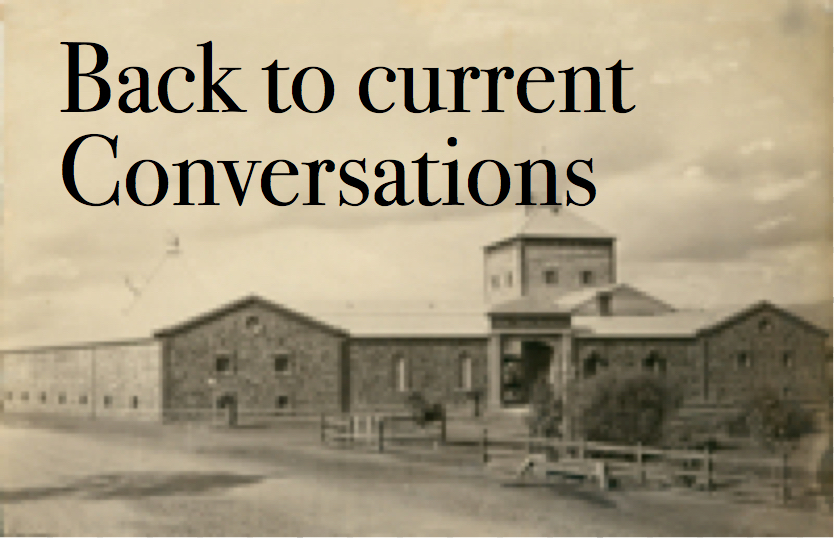

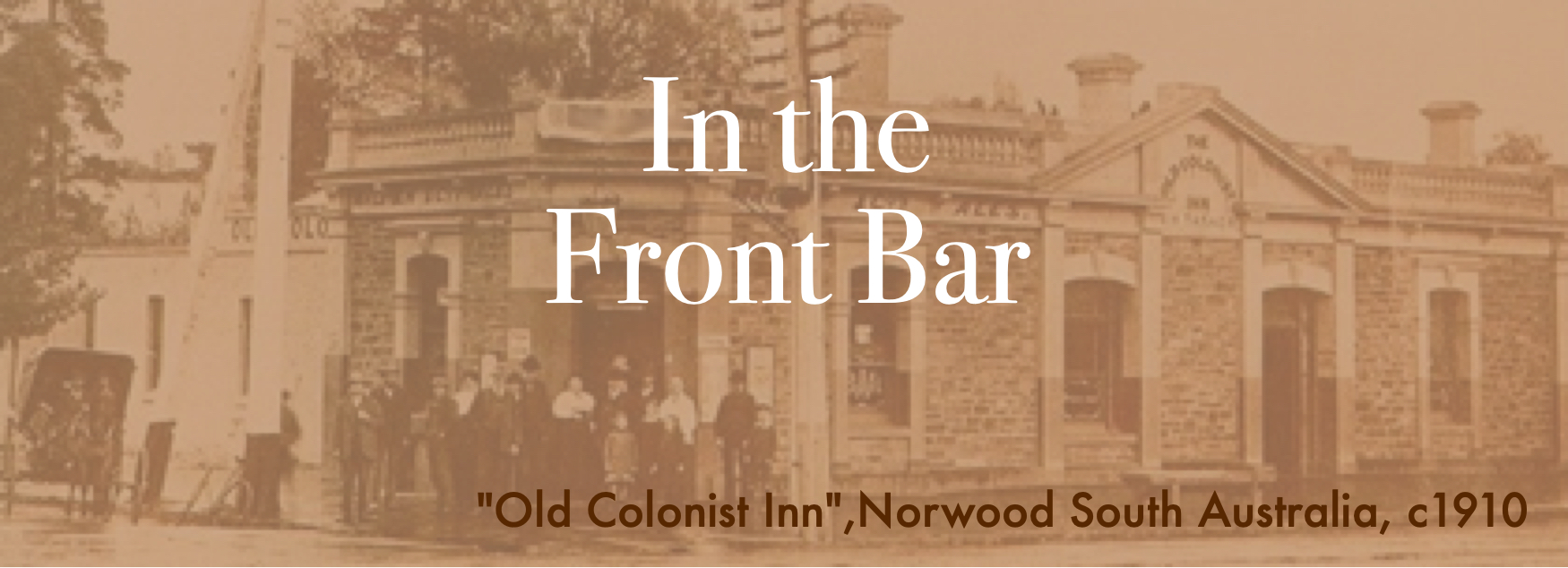
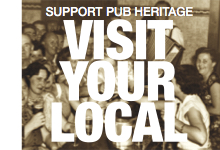
The Kentish Arms Inn, Kent Town
As well as the Colonist Tavern and the Fountain Inn, 'Otto' Tepper photographed several other local public houses including the Vintage Shades Tavern (1859-1909) in Norwood, the Buck's Head/Avenues Hotel (1860-) in Stepney and the Kentish Arms Inn (1855-1909) in Kent Town. Of these last three pubs, two been demolished and the one surviving licensed establishment is not on its original site and is hardly recognisable as a genuine public house. So that the pubs are not completely lost, Tepper's photographs are reproduced below.
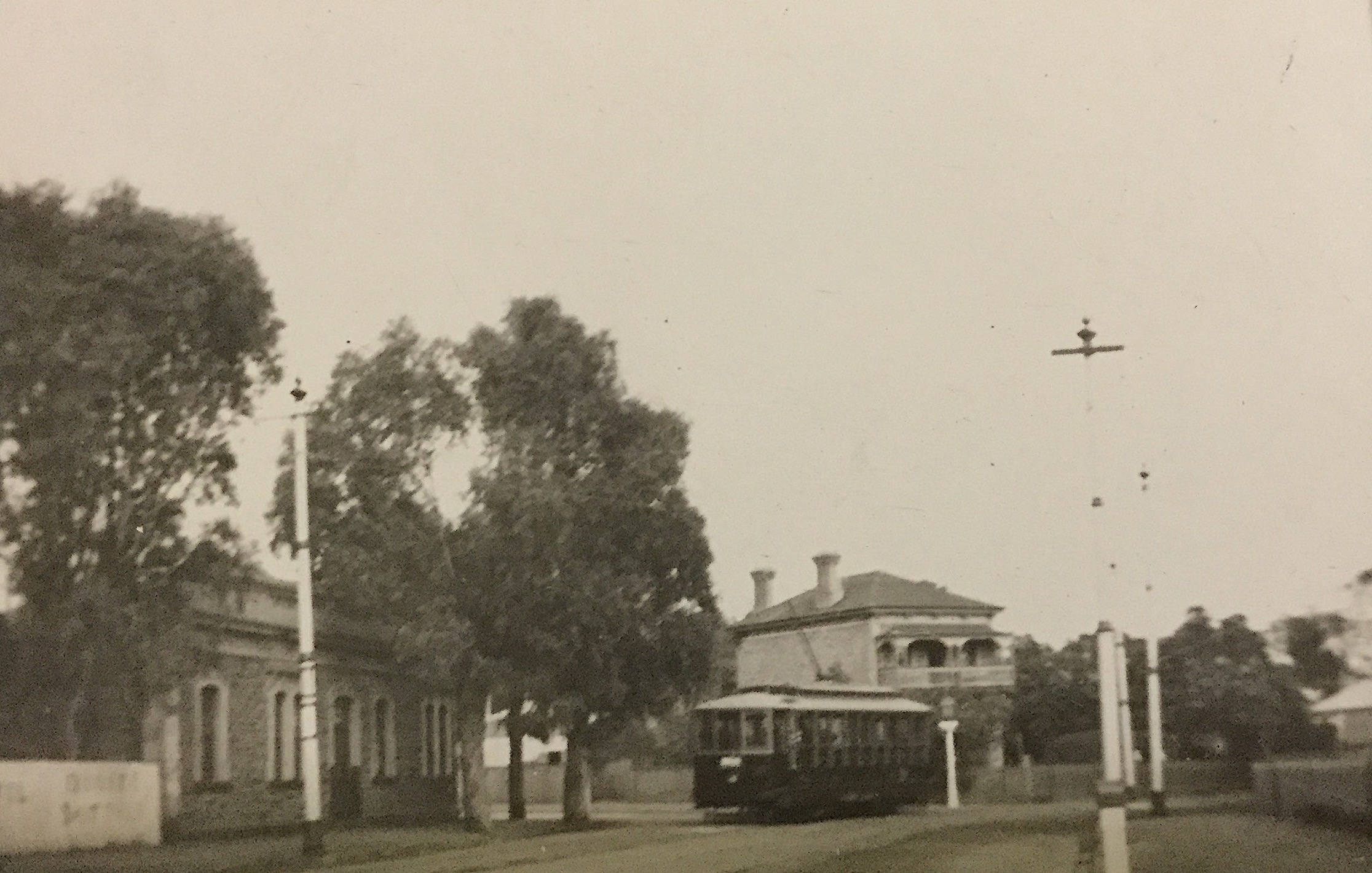
The Kentish Arms Inn, c1909
Above: ...looking west from approximately the corner of Little Young Street and Kent Road, now The Parade West
Below: ...and looking east from what was Pirie Street
It is probable that Tepper took these photographs in March 1909 soon after the opening of the Kensington and Norwood electric tramway and, coincidentally, about the same time that the Kentish Arms was delicensed following the Local Option poll of 1907-9. This is also consistent with other photographs, such as the Vintage Shades below, in the same album.
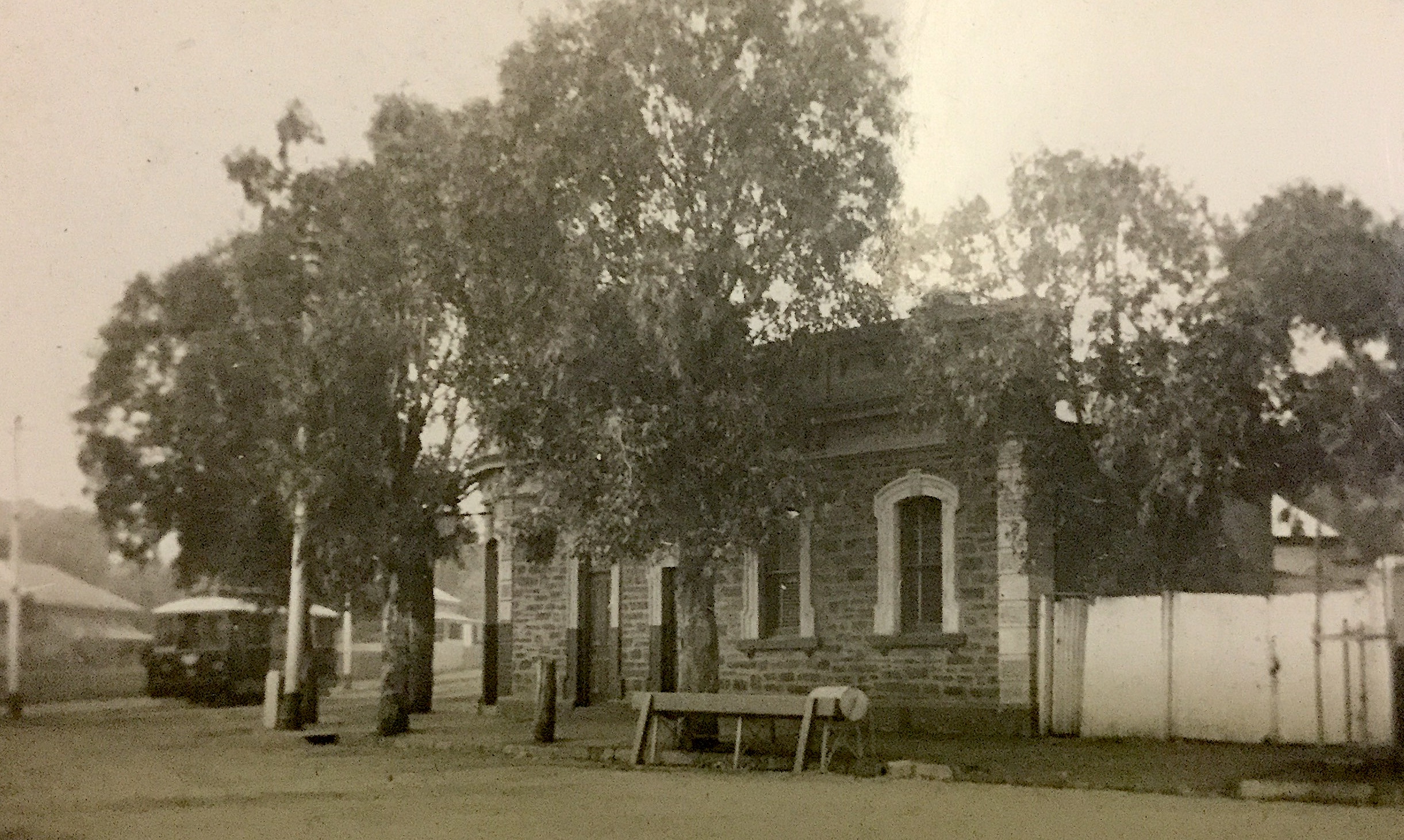
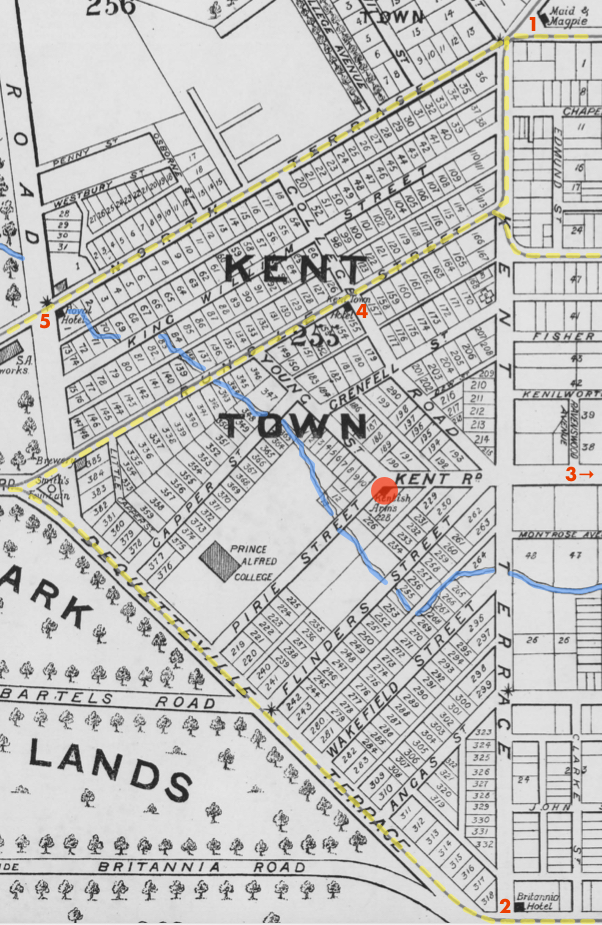
|
The site of the Kentish Arms was Lot 227, purchased by Norwood blacksmith Gerdt Leopold(t) when Kent Town was subdivided in mid-1854 [1]. Presumably Leopoldt intended entering the hospitality business since on 10 September 1855 he was granted a general publican's license [2] and immediately advertised the opening of the "commodious premises as a public-house" [3]. The location of the Kentish Arms was favourable for a public house: on the intersection of three roads and on one of the less tortuous routes through Kent Town between Adelaide and the growing eastern suburbs and farms. The Kentish Arms also enjoyed the benefit of being the first public house in Kent Town, although when the Kentish Arms opened for business the nearby and even more commodious Kent Town Hotel was under construction and was 'licensed' only six months later, in March 1856.
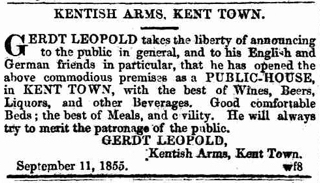 |
The background map is a portion of Frearson's plan of Kensington, Norwood, East Adelaide, and the Eastern Suburbs..., 188? [State Library of South Australia BRG 109/5B/422]
The pubs are shown in chronological order of their original licensing: 1 Maid and Magpie (1848); 2 Britannia (1850); 3 Colonist Tavern (1851); ● Kentish Arms (1855); 4 Kent Town (1856); 5 Royal (1878)
Highlighted in yellow, the Norwood and Kensington [horse-drawn] Tramway which provided fast and cheap transport to and from the eastern suburbs was inaugurated in mid-1878. Significantly it did not run past the Kentish Arms. "First Creek" is highlighted in blue; significantly it did run close to the Kentish Arms.
Above right: An advertisement for the Kentish Arms, September 1855 [Adelaide Times, 22 September 1855, p.1]
An anonymous photograph, taken probably in late 1862 and certainly by 1865, shows the original Kentish Arms as a relatively modest building. The Corporation of Kensington and Norwood's Assessment Book for 1857 describes the building simply as the "Kentish Arms Tavern, outbuildings and garden" on the two allotments and with a combined rateable value of £70, compared to £110 for the nearby Kent Town Hotel [4]. (It remains a mystery why the pub was called the Kentish Arms rather than being named, as was common, after the first proprietor's home town - Hamburg? - or immigration ship - Australia - and especially since another Kentish Arms Inn was already well established in nearby North Adelaide.)
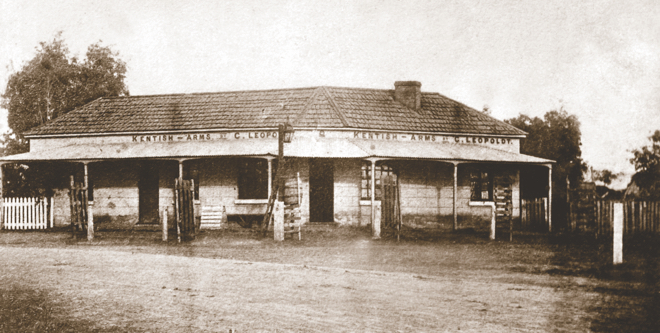 Above: The Kentish Arms, c.1862
Above: The Kentish Arms, c.1862[Courtesy of the City of NPSP Cultural Heritage Centre; no reproduction without permission of the City of NPSP Cultural Heritage Centre ]
The photograph hints at a problem with the location of the Kentish Arms: its proximity to what is now known as "First Creek" and susceptibility to periodic flooding. According to one report, in mid-August 1862 "the creek which traverses the township [of Kent Town] from the Kentish Arms to Bailey's Garden [Hackney] rose considerably, and occasioned a large amount of damage to adjacent gardens and houses" [5]. What looks like flood-water stains at the base of the walls and what appear to be duck-boards drying outside the pub imply that the Kentish Arms was flooded at this time and would have suffered some flood damage. From about this time the fortunes of Gerdt Leopoldt and the Kentish Arms seem to have declined. Perhaps reflecting this, there was an almost annual turn-over of licensees, several of whom were insolvent and others of "intemperate habits" [6].
In September 1876, soon after opening the Kent Town Brewery on the corner of Rundle Street and Dequetteville Terrace, Edwin Thomas Smith, ironmonger/importer, politician and brewer, purchased the Kentish Arms Inn, one of a number of public houses whose leases Smith had acquired when he took over the business at "Logue's Brewery" in May 1866 [7]. In January 1877 tenders were invited "for building additions and making alterations and repairs to the Kentish Arms Inn" to the specifications of the architect Thomas English, who Smith had retained for his new brewery [8]. This tender did not proceed, possibly because, at about the same time, Smith had invested £3000 in building The Royal, a 'modern', two-storied, 25-roomed hotel at a prominent location nearby in Kent Town (5 on the map above). However, in August 1879, tenders were again called for the rebuilding of the Kentish Arms, less repairs, with Campbell and Hamilton as architects [8]. The result was the stone and brick public house that Tepper photographed thirty years later.
In its survey of "building improvements during 1879" in the eastern suburbs, the South Australian Register noted that "most of the old public-houses have had new faces put on them... and the Kentish Arms Hotel has been improved to the tune of about £1000, Messrs. Campbell and Hamilton being the architects" [9]. A comparison of the photograph of the original Kentish Arms with those taken by Tepper suggests that the building additions and alterations undertaken in 1879-1880 were more than just replacement of the facade; in most respects - dimensions, building materials, fenestration and doorways - these appear to be quite different buildings. The plan below shows the outline of the Kentish Arms and its associated stables and out-buildings in about 1884 [10], soon after the pub was rebuilt; again the dimensions suggest that this was a new building.
The Kentish Arms was flooded yet again in April 1892. According to one report, "the overflow...entered the Kentish Arms from the back, and to fill the cellars (containing spirits and liquor) took but a short time. The kitchen and servants' room had about a foot of water in them. The landlord thinks that £10O would about cover his loss of furniture, clothes, and the servants' clothes. In the yard the water rose to a depth of several feet..." [11].
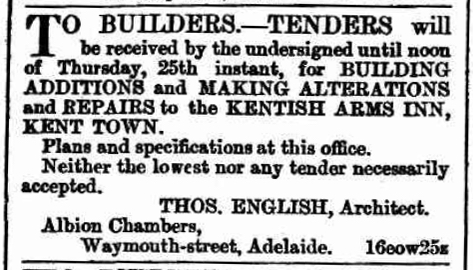
|
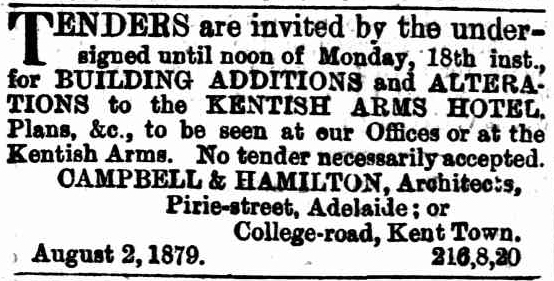
|
[Express & Daily Telegraph, 20 January 1877 and 8 August 1879]
Below: 'Sketch' plan of the Kentish Arms (Lot 227), c1884
[State Records of South Australia, Sketch books..., Kent Town, 1884-1967, GRG 53/166/00000/2/28]
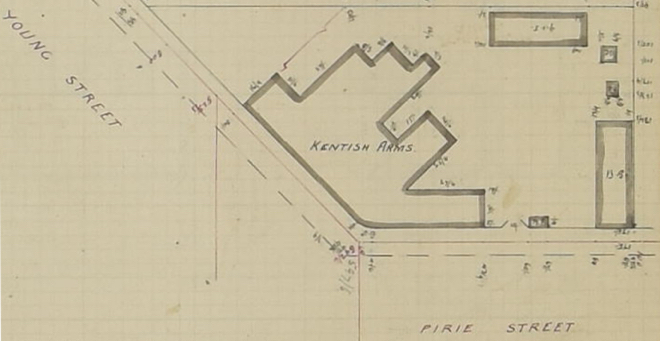
Although it had only two owners - Leopoldt and Smith - over its fifty four years, the Kentish Arms was leased or 'mortgaged' to 36 different licensed publicans, two of them - Leopoldt and Alfred Pinchbeck - more than once [12]. These are listed below. The average duration of a license was less than one and a half years with the median less than one year, suggesting a chronic level of managerial unreliability and/or lack of profitability. Both traits would have been antithetical to Smith and his partners in the South Australian Brewing, Malting and Wine and Spirit Company Limited, established in February 1888 by the amalgamation of Smith's Kent Town Brewery and several other brewing and related companies and of which Smith was a Provisional Director and a major shareholder. In 1891 Smith leased the Kentish Arms to the SABMW&SCo for 21 years, that is until 1909 [13].
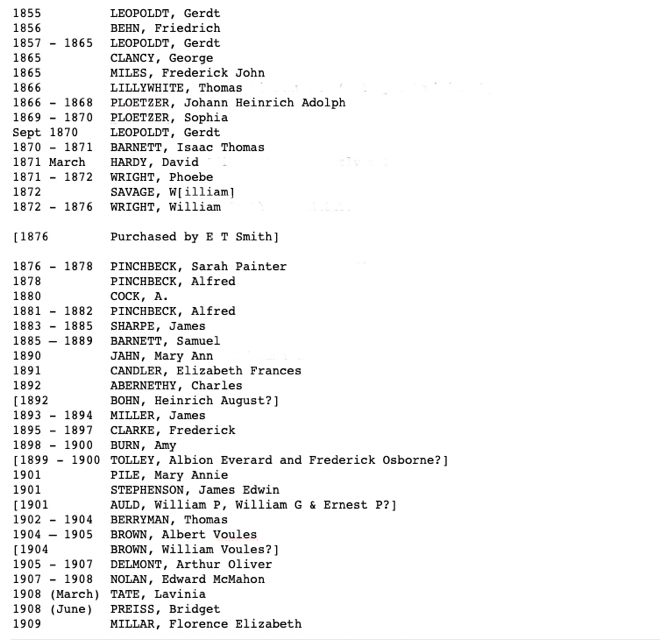 Licensees of the Kentish Arms, 1855 - 1909
Licensees of the Kentish Arms, 1855 - 1909[After J. L. Hoad, Hotels and Publicans of South Australia, 1984 & 1993 and Reg Butler's on-line list of South Australian Publicans, accessed December 2020. A text version of this list, annotated and occasionally updated, is here]
Nine of the 36 licensees - 25% - were women. As Pat Sumerling has pointed out, this was not exceptional and, in 1908, more than a quarter of the 700 licenses in South Australia were held by women [14]. However, from 1899 to 1909, a period marked by the influence of the Temperance Movement and increasingly restrictive licensing legislation on the one hand and increasing concentration of breweries and tied-houses in the liquor trade on the other, the percentage of women licensees of the Kentish Arms rose to almost 40%. The last three licensees of the Kentish Arms were women and short-term. It is interesting in this context that pubs with female licensees seem to have been over-represented in those that lost their licenses following the Local Option poll held in several Districts, including East Torrens, in 1907.
|
"Local Option" was effectively a plebiscite by which the voters of an Electoral District could determine whether the number of licensed premises in that District would be reduced (by a third or a sixth), remain the same or be increased. Consequently, on 24 October 1907 a 'quorum' of voters in East Torrens (which included Kent Town) petitioned the Governor for a Local Option poll which was held on 14 December [15]. Despite lobbying by the likes of the Temperance Alliance and the Licensed Victuallers' Defence League, animated public meetings and church sermons, letters to the editor and so on, the turnout was low. In East Torrens just over 50% of electors in the District voted "that the number of publicans' licenses be reduced from 30 to 20" and just over 44% voted for no change [16]. In Kent Town, however, almost 52% voted for no change in the number, implying that the residents of Kent Town were happy with the existing pubs.
A Special Licensing Bench met in late February to hear submissions from the owners and licensees of the thirty East Torrens hotels [17]; the evidence reported for the Kentish Arms is reproduced to the right. After legal challenges to the validity of the poll, to the membership of the Bench and regarding compensation, on 8 March 1909 the Bench announced its decision which ten public houses would lose their licenses. One of them was the Kentish Arms Hotel in Kent Town [18]. It was the only pub in Kent Town and one of five in the Kensington and Norwood Council area to lose its license. |
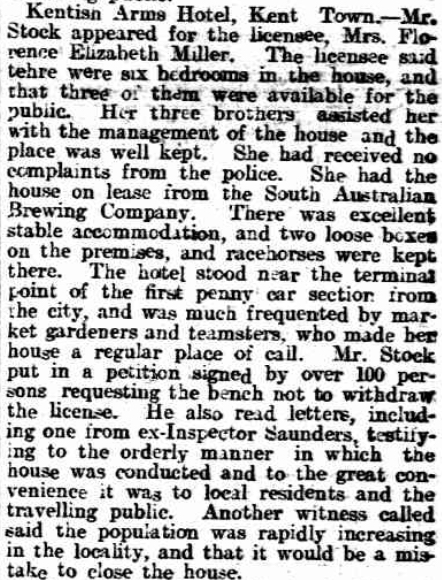
Evidence given to the Special Licensing Bench in support of the Kentish Arms, 23 February 1909 [Advertiser, 25 February 1909 p.10] William Frederick Stock (at various times Member of Parliament and Attorney General, Mayor of Glenelg and barrister) represented a number of public houses on behalf of the South Australian Brewing Company of which Stock's one-time business partner, Samuel Jacobs, was Chairman of the Board. Stock was also the brother of Robert Stock who was the Managing Director of SAB immediately before Jacobs. |
Two days later, on 10 March, at its normal annual meeting, the Adelaide Licensing Bench formally "refused" licenses for the ten East Torrens pubs [19], and, from that date, the Kentish Arms ceased to exist as a public house.
Although the licensee, Florence Millar, disputed the legality of the Special Licensing Bench [20], the South Australian Brewing Company appears not to have appealed against the delicensing of the Kentish Arms. Nor, as far as I can determine, were there any applications to re-license the pub after 1909. It might well have been that the compensation and the property were more valuable to Edwin Smith and the South Australian Brewing Company than the Kentish Arms was worth as a working pub; it might also have been that SAB tactically sacrificed its less valuable assets such as the humble Kentish Arms in order to protect its more substantial and profitable pubs in East Torrens, such as the Royal and Kent Town Hotels. Whatever the case, by 1910 and until 1916 the Kentish Arms became Mrs Watson's "Kentish House" boarding-house and, in November 1917, Edwin Smith sold the property to the local plumber James Deane [21], ending its association with the hospitality trade.
Notes
| 1 | Land Services/Land Titles Office, GRO Memorial 285/73, 24 August 1854; Land Services/Land Titles Office, Certificate of Title vol. 11, folio 113. Leopoldt also purchased the adjacent allotment, Lot 228, as well as other property in the area but these formed no part of the Kentish Arms itself. |
| 2 | Adelaide Times, 15 September 1855 |
| 3 | Adelaide Times, 22 September 1855 |
| 4 | City of NPSP Cultural Heritage Centre, Assessment Book, 1857 |
| 5 | Adelaide Observer, 16 August 1862, p.8 |
| 6 | For examples, Thomas Lillywhite (1866; Express & Telegraph. 1 April 1867, p.2), Adolph Ploetzer (1866; Register, 28 March 1866, p.6) and David Hardy (1871; Register, 28 March 1871, p.7 and Advertiser, 23 November 1871, p.1) |
| 7 | Land Services/Land Titles Office, Certificate of Title vol. 11, folio 113, Certificate of Title vol. 235, folio 81; State Library of South Australia, Business records of Piper, Bakewell and Piper, Agreement Rev. L S H Ibbetson & Sarah Logue with E T Smith, 1 May 1866, BRG 73/1/203a/8 |
| 8 | Express & Daily Telegraph, 20 January 1877 and 8 August 1879 |
| 9 | Register, 2 January 1880, p.5 |
| 10 | State Records of South Australia, Sketch books..., Kent Town, 1884-1967, GRG 53/166/00000/2/28 |
| 11 | Register, 18 April 1889, p.5 |
| 12 | The list is based on Bob Hoad's Hotels and Publicans of South Australia, 1984 & 1993, Reg Butler's on-line list of South Australian Publicans plus 'Trove' searches. |
| 13 | Supplement to the Register, 24 February 1888, p.1; Land Services/Land Titles Office, Certificates of Title vol. 235, folio 181, vol. 653, folio 93, vol. 759, folio 45 |
| 14 | Patricia Sumerling, Down at the Local, 1998, p.30 |
| 15 | Register, 14 December 1907, p.8 |
| 16 | Register, 17 December 1907, p.8 |
| 17 | Advertiser, 25 February 1909 p.10 |
| 18 | Register, 2 March 1909 p.9 |
| 19 | Register, 10 March 1909 p.7 |
| 20 | Advertiser, 2 March 1909 p.11 |
| 21 | Sands & McDougall's South Australian Directory for 1910...1916; Land Services/Land Titles Office, Certificate of Title vol 1064, folio 109 |
Vintage Shades Tavern...
The Vintage Shades (1859 - 1909) stood on the north-eastern corner of Wllliams and Elizabeth Streets, Norwood; it was demolished in the 1990s.
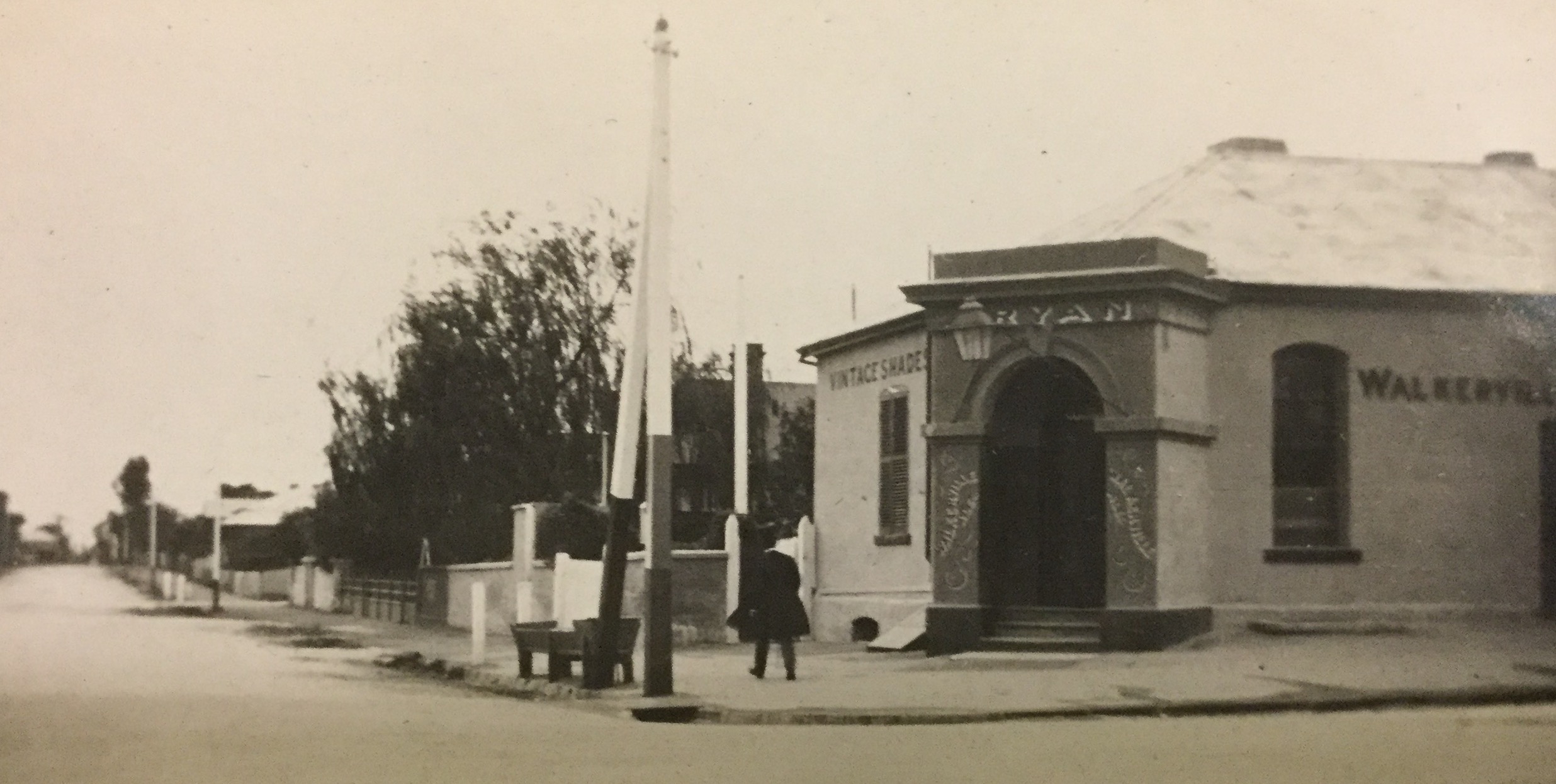
The Vintage Shades, March 1909 [State Library of South Australia, Tepper Papers, PRG 313
Above: ...looking north up Elizabeth Street Below: An interior of the Vintage Shades, possibly the cellar
The barely readable caption, further below, for the photograph of the interior describes this as the "Vintage Shades Hotel" and is dated "March 1909".
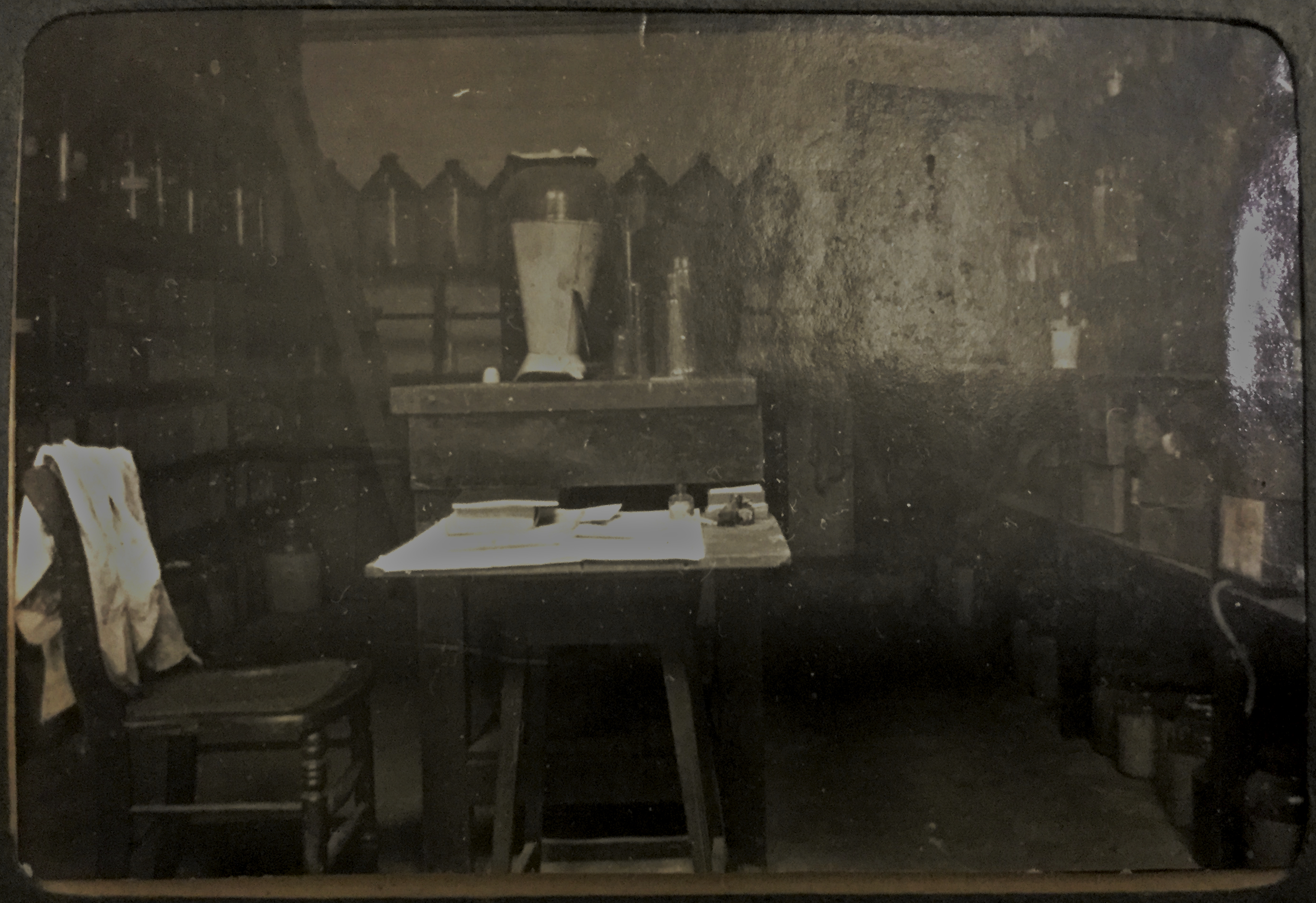

...and the Buck's Head Hotel
Originally the Stepney Hotel (1860), then the Buck's Head (1860 - 1915), The Avenues Hotel (1915 - c1985?) and now relocated and barely recognisable as the Avenues Cafe/Bar, the Buck's Head was on the north-eastern corner of Nelson Street and Payneham Road in Stepney/St Peters.
BucksHeadc1913.jpg)
Hastwell's Buck's Head Hotel, c1909 [State Library of South Australia, Tepper Papers, PRG 313]
AvenuesHotelc1915.jpg)
Hall's Avenues Hotel, c1915 [State Library of South Australia, Tepper Papers, PRG 313]
A brief note on the building of the Avenues Hotel
In March 1914, the police opposed the renewal of the Buck's Head's license on the grounds that "the premises were 'ruinous and dilapidated'; this was defended by assurances that a completely new hotel was planned and tenders were being called for its construction at a cost estimated at £4000. Building commenced in July and was presumably completed when the Buck's Head was formally renamed the Avenues Hotel on 8 September 1914.
The architect of the Avenues Hotel was Frank Kenneth Milne, "architect to the South Australian Cricket Association and the South Australian Brewing Company" and "one of the great forces in advancing the standard of architecture in the State... He has been instrumental in bringing many licensed houses up to a modern standard, and among his most notable efforts in this direction are the Avenues Hotel, St. Peters, and the Duke of Wellington at Payneham. Extensive sums have been expended this year in making additions to the South Australian Brewing Company's premises, all based on his plans. Mr. Milne was responsible for the scoring board on the Adelaide Oval, which is generally described as the most modem in existence. Directly the football season is completed the association intends to construct a new members' stand [the Sir Edwin Smith stand], and that will be in accordance with this architect's draughts."
Notes
| 1 |
Express & Daily Telegraph, 10 March 1914 |
| 2 | More on Frank Milne in the Australian Dictionary of Biography and Architects of South Australia database |
| 3 | The Mail, 10 April 1915 |
Posted: 4 January 2021. Original content © Craig Hill 2021
